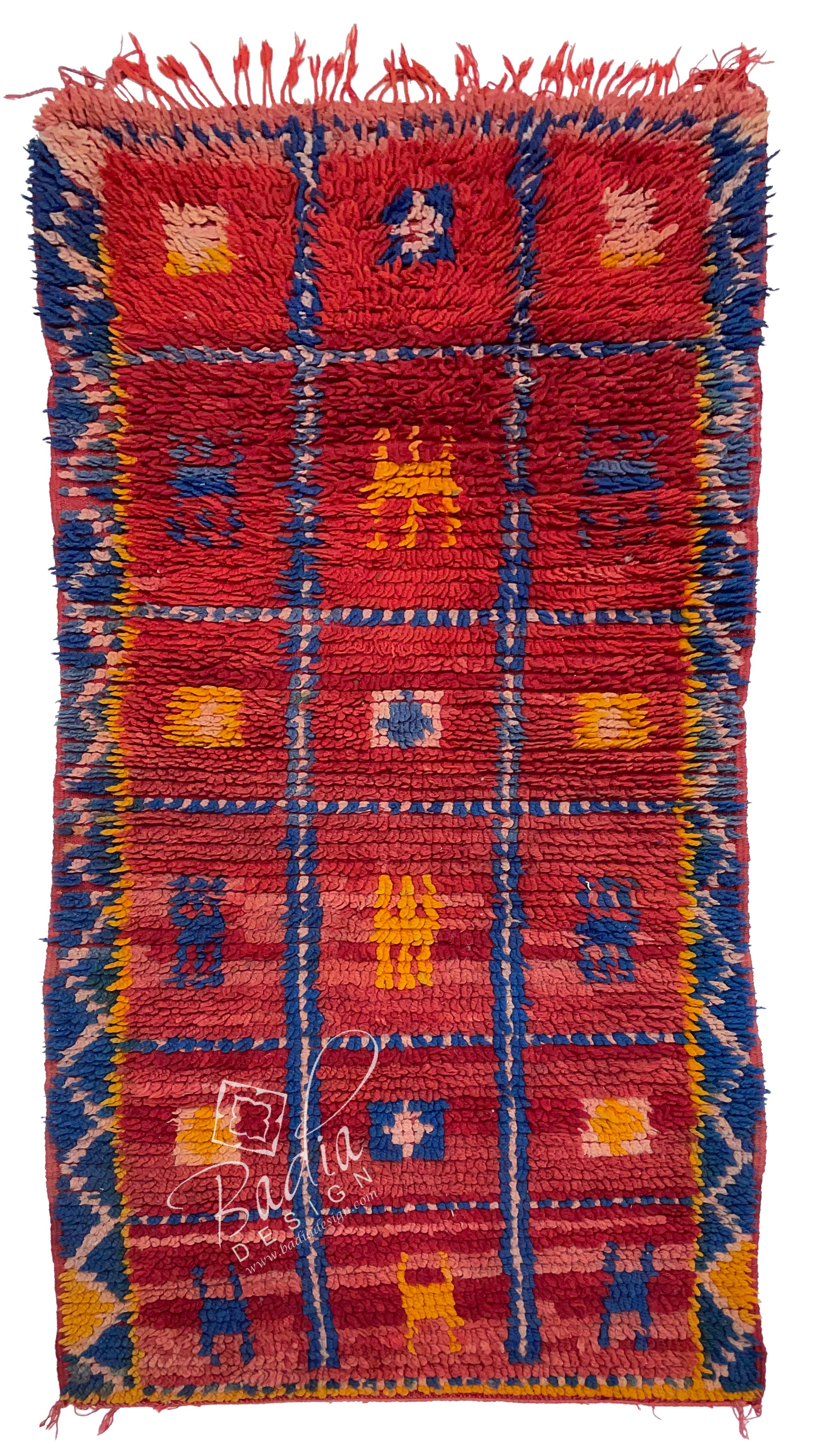Moroccan Berber Rugs: A Blend of History, Craftsmanship, and Timeless Style
These rugs have enchanted people across the globe with their deep cultural roots, intricate craftsmanship, and versatile aesthetics. Whether you are furnishing a comfortable living room, a chic office space, or a luxurious hotel, these rugs serve as more than just functional items—they are pieces of art with a story to tell. This guide delves into the fascinating history of Moroccan Berber rugs, the detailed artistry involved in their production, their exceptional longevity, and practical tips for styling them in modern spaces.
The origins of Moroccan Berber rugs can be traced back millennia to the Berber tribes of North Africa. The Berbers, with their deeply rooted traditions, crafted unique weaving methods as a practical response of their nomadic lifestyles and diverse climates.
Each Berber rug tells a story, often woven into the fabric that reflect the heritage of its creators. These symbols frequently represent themes of safety, growth, or nature, making each rug a highly meaningful creation. Historically, these rugs were made for practical use, offering warmth in the cold Atlas Mountains or serving as bedding in arid environments.
In the mid-20th century, Moroccan Berber rugs gained global popularity when renowned visionaries like Le Corbusier and Frank Lloyd Wright began incorporating them into get more info their architectural masterpieces. Now, these rugs are prized for their elegance and historical depth.
These rugs are created using time-honored techniques, preserved over many generations. It represents a perfect blend of cultural heritage and artistic skill.
Berber rugs are typically crafted from eco-friendly fibers such as sheep’s wool, camel hair, or even cotton. Wool is especially prized for its luxurious feel, durability, and ability to retain warmth. Artisans often hand-spin the wool, giving each rug a distinctive texture.
Weaving these rugs is a time-intensive process, requiring weeks or months on handcrafted weaving tools. The knotting style, from Beni Ourain’s plush textures to Azilal’s tighter weaves, impacts both durability and design.
Natural dyes derived from organic sources are used to create the bold hues found in many Berber rugs. Neutral shades dominate Beni Ourain designs, while brighter Azilal and Boucherouite pieces feature striking colors like red, blue, and yellow.
The longevity of these rugs is one of their biggest strengths. This makes them a smart choice for both homes and businesses.
Berber rugs owe their longevity to the excellent quality of their natural fibers. Wool’s elasticity and stain resistance contribute to their durability.
Taking care of these rugs is straightforward. Routine vacuuming and periodic professional care can preserve their beauty for decades.
Styling Moroccan Berber Rugs in Contemporary Interiors
Incorporating Moroccan Berber rugs into contemporary interiors is easier than you might think. These rugs' adaptability allows them to suit various aesthetics, including minimalist and bohemian styles.
1. Anchor a Living Room
A large Beni Ourain rug can serve as the focal point of your living area. Its neutral colors and simple geometric patterns can tie together various design elements while adding a sense of warmth and comfort.
2. Introduce Vibrancy to Minimalist Rooms
In minimalist or neutral spaces, a colorful Azilal or Boucherouite rug can add a bold, eye-catching accent. These rugs work particularly well in neutral-toned rooms, where they serve as a focal point.
3. Layer Rugs for Texture
For a cozy, eclectic vibe, layer a smaller Berber rug over a larger natural-fiber rug, such as jute or sisal. This pairing enhances texture and emphasizes the unique patterns of the Berber rug.
4. Elevate the Look of Offices and Workspaces
Businesses can use Moroccan Berber rugs to create an inviting and sophisticated ambiance in office spaces, lounges, or reception areas. The artisanal craftsmanship of these rugs radiates authenticity and refinement.
5. Use as Wall Art
Some Moroccan Berber rugs are so visually stunning that they deserve to be displayed as art. Displaying a Berber rug on a wall highlights its intricate design and cultural significance.
The Value of Moroccan Berber Rugs
Moroccan Berber rugs combine functionality, beauty, and cultural depth, making them a valuable choice for homes and businesses alike. These rugs are built to last, and their classic designs remain relevant despite evolving decor trends.
Sustainability and Ethical Production
Berber rugs are often made with environmentally responsible and sustainable techniques. Purchasing these rugs helps preserve artisan traditions while enriching your decor with sustainable beauty.
The Appreciating Worth of Moroccan Berber Rugs
Authentic Moroccan Berber rugs often appreciate in value over time, especially vintage or rare pieces. They are both functional decor and collectible assets.

Comments on “Berber Kilim Rugs”